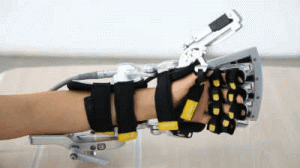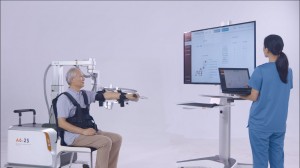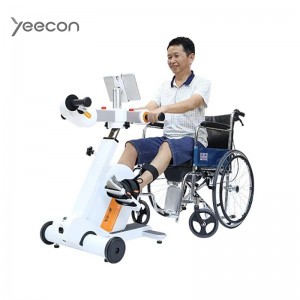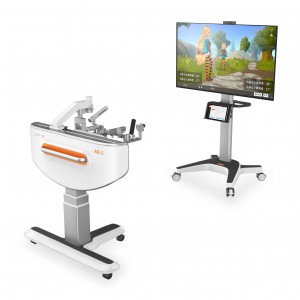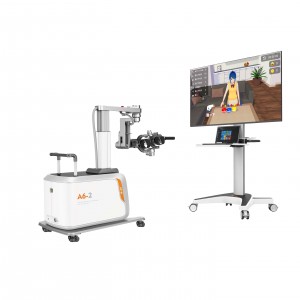Stroke has the characteristics of high morbidity, high disability rate and high mortality rate. About 70%-80% of the surviving patients have varying degrees of dysfunction, which seriously affects patients‘ living quality and brings heavy burden to patients’ families and the society.
Patients with hemiplegia are easy to form abnormal gait because it is hard for them to coordinate balance, weight bearing and stride organically. Recovery of walking ability is one of the important goals of rehabilitation training for stroke patients with hemiplegia.

1. Isokinetic Muscle Strength Training
Isokinetic motion is a special motion mode in which the angular velocity is constant and resistance is variable. It needs special isokinetic equipment to realize it. Once the angular velocity of constant velocity movement is set, no matter how much force the subject uses, the angular velocity of joint movement always remains at the pre-set speed. Subjective force can only increase muscle tension and output power, but cannot produce acceleration. It is considered as the best way to evaluate muscle function and study muscle mechanical properties at present.
Isokinetic muscle strength training has two major characteristics: constant speed and compliant resistance: It can not only preset the movement speed as required, but also ensure that the muscle activity at any point during the movement can bear the maximum resistance. These two basic characteristics ensure the best application of muscle strength training.
In terms of effectiveness, the muscles can bear the maximum load at every angle within whole range of motion during isokinetic training, producing the maximum torque output and improving the training efficiency. In terms of safety, the speed of isokinetic training is relatively stable and there’s no explosive acceleration, so that muscle and joint injury can be avoided.
2. Isokinetic Muscle Strength Assessment
The training system can not only provide patients with high quality rehabilitation training, but also provide effective rehabilitation evaluation. PT is the maximum force output of flexor and extensor muscle group in muscle testing, which has high accuracy and repeatability. It is regarded as the gold index and reference value in isokinetic muscle strength testing. TW is the sum of the amount of work done by the contraction, the product of the force and distance under the torque curve. The above indicators are representative indicators in isokinetic muscle strength training, which basically reflect the muscle strength size and muscle endurance of the tested muscle group, making the evaluation of trunk muscle strength of patients more visual.
3. Isokinetic Trunk Strength Training
Isokinetic trunk muscle strength training ensures that the trunk muscles can withstand the maximum resistance at every angle and produce the maximum torque output in the training process, which is very important for enhancing the trunk muscle strength and the stability of the human core. It is also the necessary criteria for improving walking ability and strengthening balance. Similarly, trunk control ability, core stability and balance ability and walking ability were highly correlated in stroke patients with hemiplegia.
4. Isokinetic Lower Limb Function Training
Isokinetic muscle strength training can not only improve the muscle strength of knee flexor and extensor muscle group, but also significantly coordinate the normal ratio of active and antagonistic muscles, which is of great significance in the stability of joint. Isokinetic muscle strength training plays an important role in enhancing the muscle strength of knee flexor and extensor muscle, improving the control ability of the affected lower limb, preventing knee hyperextension, improving the load-bearing ability of the affected lower limb, improving weight shifting and balance ability, and improving lower limb function and ability of daily living.
Isokinetic muscle strength testing and training technology has been considered as the best method for muscle function evaluation and muscle mechanics training. In muscle function evaluation and muscle strength training, this method is objective, efficient, safe and repeatable. Moreover, due to its compliance resistance, it can be applied even in the condition of weak muscle strength. In addition, isokinetic technology can be used to evaluate patients’ muscle spasm, establish quantitative evaluation index for spastic hemiplegia, and judge the effect of spasm treatment, which has a good application prospect in clinical neurological rehabilitation.


